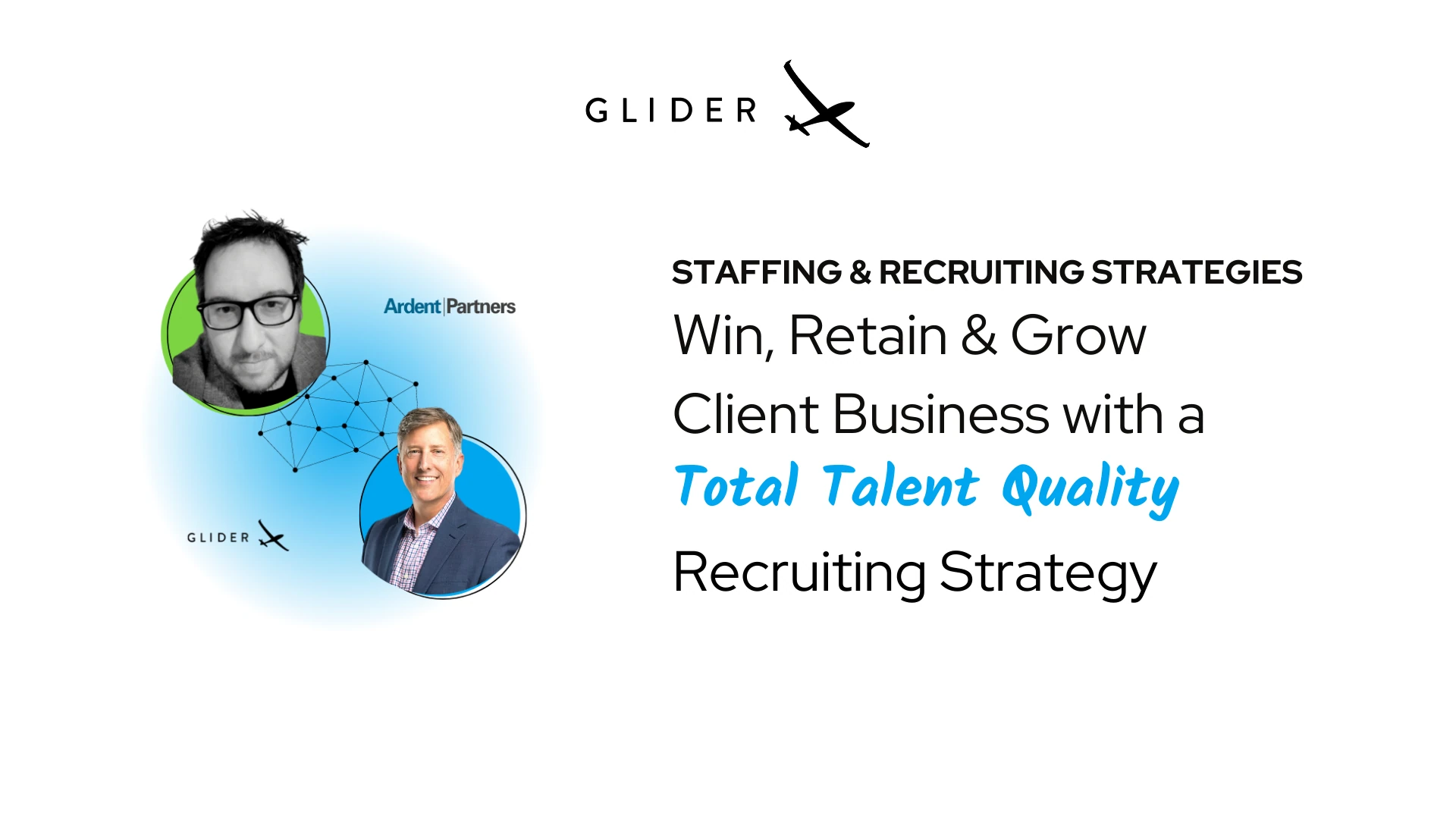Pioneering Excellence in Staffing and Operations
Professional Background
Joy Pastor has been in the staffing industry since 2007, following a successful career with major technology companies such as Sun Microsystems, Network Appliance, and SAP. Her passion for technology, coupled with her background in operations, naturally led her to the staffing industry, where she excels at improving processes to boost efficiency, scalability, and organizational growth.
Throughout her career, Joy has held various roles on both the MSP and supply sides, as well as on the buyer side. Her expertise lies in analyzing and optimizing staffing processes, identifying inefficiencies, streamlining operations, and implementing long-term solutions. Joy is known for her ability to examine the overall landscape, understand how the pieces fit together, and make strategic recommendations that drive meaningful change.
Diversity, Equity, and Inclusion
In addition to her operational work, Joy has spearheaded award-winning diversity, equity, and inclusion (DEI) initiatives, demonstrating her commitment to elevating underrepresented groups and fostering a culture where all employees feel heard, welcomed, and valued.
Prioritizing the Candidate
Her primary focus was always on the ultimate goal—hiring the right candidates. To achieve this, Joy ensured that the experience of every party involved was considered, from candidates and staffing partners to the MSPs and the client. Her role was to guarantee that any recommendations for improvements took into account the needs of all stakeholders, ensuring long-term success across the board.
She places particular importance on the candidate experience, recognizing it as the most crucial aspect. Whether it’s entering time cards, navigating schedules, or ensuring the correct pay rate is reflected, Joy’s goal is to make sure candidates can smoothly interact with the VMS and other contingent staffing systems. She also pointed out that supplier’s role is critical, as they work with candidates based on job descriptions provided through the VMS.
Technical Expertise
In her approach to technology changes, Joy emphasizes the importance of considering every party that interacts with the system. For example, in a VMS (Vendor Management System), the candidates, vendors, and MSPs all engage with the platform at different stages. It starts with the client posting a job, which is then shared by staffing partners with their candidate pools. The candidates eventually use the VMS for onboarding and other processes. Joy ensures that any changes or enhancements to the technology keep the experience of all these users in mind.
Her ability to build and nurture relationships across all levels of an organization, from recruiters to the C-suite, allows her to understand how change impact everyone involved, ensuring that her recommendations are not just quick fixes, but sustainable solutions.
Multiparty, Multi-Stakeholder Alignment
One of Joy’s superpowers is seamless coordination and alignment across multiparty, multi-stakeholder contingent workforce programs. Her process to ensuring successful program execution? Joy works closely with hiring managers to make sure job requirements are fully understood. She ensures that job descriptions are accurate, avoiding common issues where job postings don’t match the actual requirements. Accurate data in the VMS is essential, as it allows suppliers to find the right talent. This also benefits candidates, ensuring they have the correct information to prepare for interviews, which often serve as their introduction to the company. For Joy, creating a positive, seamless experience for candidates is key to their success in any program.
Advice for Candidates and Recruiters: Candidate Experience, Leveraging Technology, and Driving a Strategic Job Search
Candidate Experience
Joy has gained valuable insights from working closely with recruiters, especially in recognizing that candidates are at the core of the entire process. The staffing industry hinges on ensuring that candidates find assignments with clients, and that their experience is smooth and positive. A key takeaway from her collaboration with recruiters is the importance of prioritizing the candidate experience. It’s essential for recruiters, staffing companies, and MSP programs alike funnel information to candidates correctly, ensuring that they are well-prepared and supported throughout the process.
Joy emphasizes that following up with candidates is crucial—even when there are no updates from the client. Leveraging data and analytics is another lesson learned, as it allows recruiters to gather valuable insights from candidates regarding other roles they may be applying for. This information can help recruiters understand the job market better and assess if certain skills are transferable. Furthermore, building a strong employer brand is critical. For recruiters, Joy believes that the way one presents themselves reflects the employer and their reputation. Ignoring candidate calls or failing to respond to texts can lead to a poor candidate experience, which ultimately affects the company’s image.
Optimizing the Tech Stack
Another important piece of advice Joy offers is to optimize the tech stack. She points out that AI has been a part of the industry for a long time and should be embraced as a tool that helps recruiters qualify candidates more efficiently. Tools like Glider AI and similar technologies can automate certain processes, allowing recruiters to focus on the human aspect of their role. AI doesn’t replace human interaction but rather enables recruiters to spend more time providing a personalized, thoughtful experience for candidates.
Being Strategic with Your Job Search
Her advice to job seekers reflects the tight job market. She encourages them to put their best selves forward while being genuine and authentic. Job seekers should focus on what they truly want, rather than applying to every job available. This involves doing a self-assessment, seeking feedback from friends or coworkers, and ensuring that their resume and cover letter are tailored to the specific job. Networking is also critical, as referrals often carry more weight than blind applications.
Joy advises candidates to optimize their online presence by ensuring their social media profiles align with their professional image. Researching the companies they apply to and aligning their resumes with the company’s vision, mission, and values can also help them stand out. Additionally, she stresses the importance of developing a job search strategy, whether it involves applying through job boards or relying on referrals.
Most importantly, Joy encourages job seekers to stay positive and resilient. In a tough job market with reduced budgets and layoffs, maintaining a positive outlook and resilience will help them navigate the search process more effectively. By following these steps, job seekers will be better prepared to succeed when the market turns in their favor.
When crafting your resume, after thoroughly researching the company, ensure that the details in your resume align with the job description. It’s important to do a “like-for-like” skill match, as employers will be looking for keywords that relate to the role and company. An additional tip is to include insights you’ve gathered about the company from their website or other sources, even if those aren’t explicitly mentioned in the job description. This demonstrates that you understand the company’s culture and needs, and shows that you possess transferable skills.
Make sure all relevant skills are clearly highlighted in your resume, whether listed within each job experience or in a dedicated skills section. Your skills are key to progressing to the next stage of the hiring process, so it’s crucial that they align with the role you’re applying for. By ensuring that your skills match the position, you’ll stand a better chance of catching the hiring manager’s attention.
Business Priorities: Lean Operations, Restructuring Trends, and Strategic Staffing Adjustments
Joy has observed that many programs and companies are focusing on operating lean and implementing cost reductions. Consequently, hiring she sees hiring to remain slow for the remainder of 2024. However, she feels positive about 2025, anticipating that post election, there will be a restructuring or realignment as a natural response to a new government. Additionally, there is a growing trend towards offshore or nearshore staffing, with increased scrutiny and qualification of jobs within the United States.
Pastor emphasized that while the job market has slowed, there’s still work to be done. So as companies look to bring in talent, they are becoming more focused on skill and fit, likely to implement rigorous interview processes, and a stringent competency evaluation process. She also pointed out that the more stringent interview to hire process is part due to companies prioritizing cost reduction and exploring offshoring strategies. Joy further clarified that companies need a way proven and scalable way to make sure the people hired, especially offshore, meet talent quality benchmarks. Pastor advises that anyone considering the offshore model should ensure comprehensive training programs are in place.
Pastor also highlights the importance of educating offshore recruitment teams about client sites and local areas. For instance, if a position is in Foster City, it is beneficial to provide information about the local amenities and environment. This approach helps in attracting candidates not only to the job and company but also to the location where they will be commuting and spending their time. By making the entire opportunity appealing, candidates are more likely to engage with the role and remain satisfied in their new position.
Staffing Predictions for 2025: Independent Talent, Hiring Trends, and Offshoring Growth
Joy Pastor’s top three predictions for the employment landscape are:
Rise in Independent Talent: Pastor predicts a growing trend of skilled professionals opting for independent work. Many individuals with specialized skills and experience in contingent workforce programs are choosing to work independently. This shift will lead to the formation of talent collectives, talent available for fractional engagements, offering contingent workforce operators new opportunities to collaborate with these specialized professionals.
Increase in Hiring in 2025: Pastor anticipates a rise in hiring for 2025. Based on insights Joy found from Staffing Industry Analysts, she believes there will be an uptick of 3%.
Growth in Offshoring and Near-shoring: As companies recover from losses and restructure to operate more efficiently, Pastor foresees an increase in offshoring and near-shoring. This strategy is becoming more prevalent as organizations seek to streamline their operations and reduce costs.



